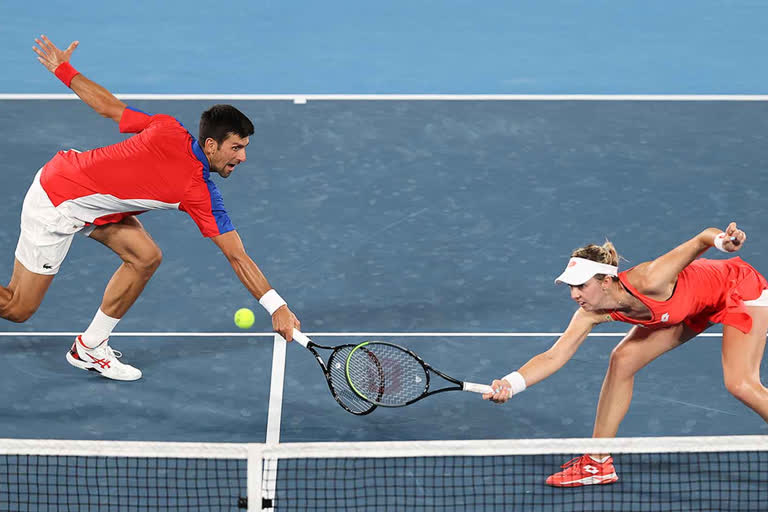Tokyo:Novak Djokovic unleashed a scream as if he had just won one of his 20 Grand Slam titles.
This being the slightly less prestigious mixed doubles competition at the Tokyo Olympics, Serbian partner Nina Stojanovic broke out into a fit of laughter at Djokovic's outsized reaction after he served out a first-round win over the Brazilian pair of Luisa Stefani and Marcelo Melo.
The contrast in personalities proved to be a winning formula in Djokovic's first competitive mixed doubles tournament in 15 years.
The Serbians won their opening two matches in straight sets before losing to the Russian pair of Elena Vesnina and Aslan Karatsev in the semifinals.
Then they had to withdraw from the bronze medal match when Djokovic picked up a left shoulder injury during a pair of strenuous singles defeats.
"I'm learning she's very easygoing on the court," Djokovic said.
"We balance each other."
Read: Naomi Osaka eliminated from Tokyo Olympics tennis tournament
Stojanovic, who reached the semifinals at the Australian Open and the quarterfinals at Wimbledon in women's doubles this year, called it "inspiring" sharing the court with Djokovic.
"I'm just trying to be in the same range as he is on the court at least with the energy," Stojanovic said.
With Olympic medals on the line, there's been some serious star power in the 16-team mixed doubles tournament at Ariake Tennis Park.
Most notably, the top-ranked players in both men's and women's singles entered: Djokovic and Ash Barty.
Barty and Australian partner John Peers, who are good family friends, took the bronze medal courtesy of a walkover because of Djokovic's injury.
In an all-Russian final on Sunday, Vesnina and Karatsev will face Anastasia Pavlyuchenkova and Andrey Rublev.
Barty and Peers beat the high-profile Greek duo of Stefanos Tsitsipas and Maria Sakkari of Greece in the quarterfinals.
Tstitsipas (No. 4) and Rublev (No. 7) are also both ranked in the top 10 in singles.
While mixed events are now becoming the norm at the Olympics with competitions featuring both sexes in swimming, athletics, archery, judo, shooting, table tennis and triathlon introduced at these Games, tennis mixed doubles has a history at the Games dating back to the start of the previous century.
Read: Not Federer, not Wawrinka: Bencic gets gold for Switzerland
